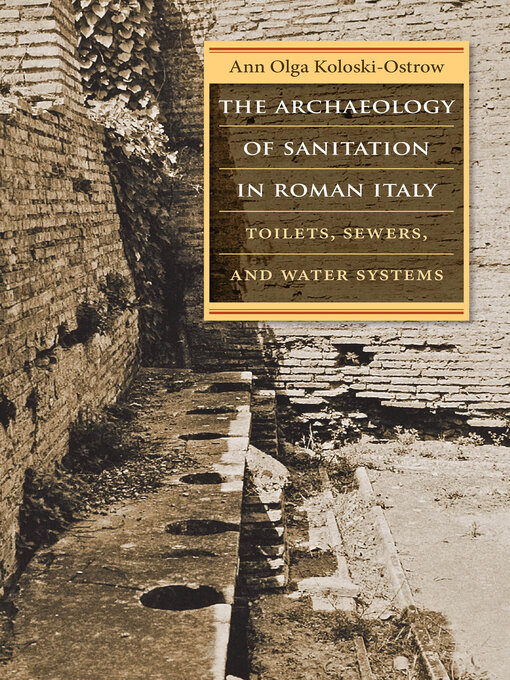- HPU Campus Histories
- Business
- Religion & Spirituality
- Self-Improvement
- History
- See all nonfiction collections
The Archaeology of Sanitation in Roman Italy
Toilets, Sewers, and Water Systems
-
Creators
-
Series
-
Publisher
-
Release date
April 6, 2015 -
Formats
-
Kindle Book
-
OverDrive Read
- ISBN: 9781469621296
-
PDF ebook
- ISBN: 9798890873033
- File size: 32010 KB
-
-
Languages
- English
-
Reviews
-
Library Journal
June 15, 2015
The fruits of classical studies scholar Koloski-Ostrow's decadeslong exploration of an intriguing and sorely overlooked aspect of ancient Roman culture is this slim but invaluable volume. The work is laden with useful data concerning Roman social habits. While toilets and their presence or absence in Roman communal and private buildings reveal much about the milieu in which they were constructed, archaeologists in the 1800s and the first half of the 20th century often overlooked sanitation systems in order to focus on more popular aspects of Roman material society such as mosaics, temples, and coliseums. Indeed, many of these early professionals went out of their way to describe the toilets they uncovered as being other things entirely. As a result, unfortunately, much useful information has been lost. This, the author contends, speaks lengths to the prudish nature of the times. Luckily, places such as Pompeii and Herculaneum provide researchers with a clear snapshot of a moment in time. Koloski-Ostrow also draws on literature and surviving graffiti to reach unusual revelations. For example, that toilets were often in close proximity to food preparation areas; that the ancient Roman concept of hygiene is largely removed from our own; and that the goddess Fortuna frequently appears in these spaces--her presence indicating, perhaps, that the Romans were concerned that their toilet ministrations went well. The author's examination of public and private space reveals, too, that shared toilets may possibly not have been divided by class. VERDICT A thoughtful investigation of an essential aspect of Roman civilization. Highly recommended.--Brian Renvall, Mesalands Community Coll., Tucumcari, NM
Copyright 2015 Library Journal, LLC Used with permission.
-
subjects
Languages
- English
Loading
Why is availability limited?
×Availability can change throughout the month based on the library's budget. You can still place a hold on the title, and your hold will be automatically filled as soon as the title is available again.
The Kindle Book format for this title is not supported on:
×- - Kindle 1
- - Kindle 2
- - Kindle DX
- - Kindle Keyboard
- - Kindle 4
- - Kindle Touch
- - Kindle 5
- - Kindle Paperwhite
- - Kindle 7
- - Kindle Voyage
Read-along ebook
×The OverDrive Read format of this ebook has professional narration that plays while you read in your browser. Learn more here.

